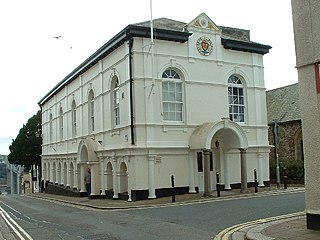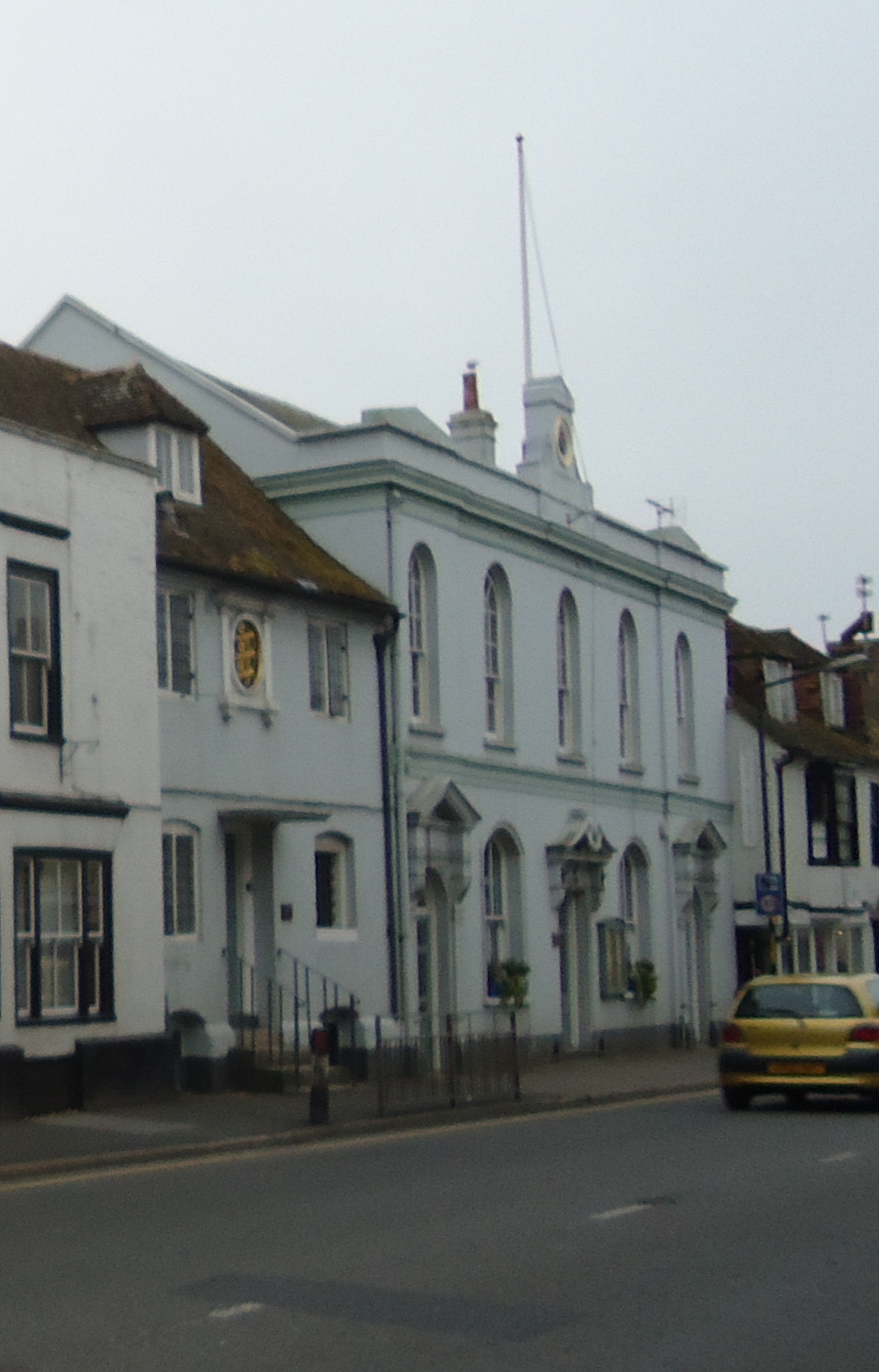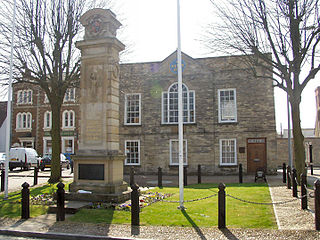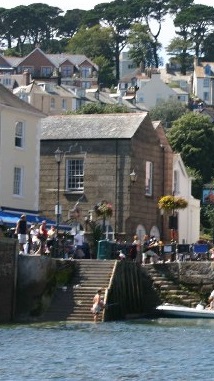In the United Kingdom and Republic of Ireland, a county town is the most important town or city in a county. It is usually the location of administrative or judicial functions within a county, and the place where the county's members of Parliament are elected. Following the establishment of county councils in England 1889, the headquarters of the new councils were usually established in the county town of each county; however, the concept of a county town pre-dates these councils.

Ilchester is a village and civil parish, situated on the River Yeo or Ivel, five miles north of Yeovil, in the English county of Somerset. Originally a Roman town, and later a market town, Ilchester has a rich medieval history and was a notable settlement in the county; around the 12th and 13th centuries it was effectively the county town. It had, however, declined in size and importance by the beginning of the 18th century, and the last markets were held in 1833. In 1889 the historic corporation that had governed the town was dissolved.

Ilchester Museum is a small local museum in Ilchester, Somerset, England. The museum is based in a former private house, known as the Town Hall House. Standing behind Ilchester Town Hall, the Town Hall House is a Grade II listed building.

Saltash Guildhall is a municipal building in Fore Street, Saltash, Cornwall, England. The structure, which was the meeting place of Saltash Borough Council, is a Grade II listed building.

Minehead Town Hall is a municipal building in The Parade, Minehead, Somerset, England. The structure, which is the meeting place of Minehead Town Council, is a Grade II listed building.

New Romney Town Hall is a municipal structure in the High Street, New Romney, Kent, England. The structure, which is the meeting place of New Romney Town Council, is a Grade II listed building.

Okehampton Town Hall is a municipal building in Fore Street, Okehampton, Devon, England. The town hall, which is the meeting place of Okehampton Town Council, is a Grade II* listed building.

The Guildhall is a municipal building in Fore Street in Plympton, Devon, England. The structure, which is used as a community events venue, is a Grade II* listed building.

Bishop's Castle Town Hall is a municipal building in the High Street in Bishop's Castle, Shropshire, England. The building, which is the meeting place of Bishop's Castle Town Council, is a Grade II* listed building.

Langport Town Hall is a municipal building in Bow Street in Langport, Somerset, England. The building, which is the meeting place of Langport Town Council, is a Grade II listed building.

The Moot Hall is a municipal building in Market Cross Place in Aldeburgh, Suffolk, England. The building, which is the meeting place of Aldeburgh Town Council, is a Grade I listed building.

The Moot Hall is a municipal building in Boroughgate, Appleby-in-Westmorland, Cumbria, England. The building, which is currently used as the meeting place of Appleby-in-Westmorland Town Council, is a Grade II* listed building.

Lostwithiel Guildhall is a municipal building in Fore Street in Lostwithiel, Cornwall, England. The structure, which currently accommodates the local museum, is a Grade II listed building.

The Old Guildhall is a municipal building in Higher Market Street in Looe, Cornwall, England. The structure, which is currently used as a museum, is a Grade II* listed building.

Higham Ferrers Town Hall is a municipal building in the Market Square in Higham Ferrers, Northamptonshire, England. The structure, which serves as the offices and meeting place of Higham Ferrers Town Council, is a Grade II listed building.

Fowey Town Hall is a municipal building on the Town Quay in Fowey, Cornwall, England. The structure, which serves as meeting place of Fowey Town Council, is a Grade II listed building.

Milborne Port Town Hall is a municipal building in the High Street in Milborne Port, Somerset, England. The structure, which serves as meeting place of Milborne Port Parish Council, is a Grade II listed building.

The Old Town Hall is a municipal building in South Street in Seaford, East Sussex, England. The structure, which is used as a community tea room, is a Grade II listed building.

Winchelsea Court Hall, formerly known as the Water Bailiff's Prison, is a municipal building in the High Street in Winchelsea, East Sussex, England. The structure, which is used as a museum, is a Grade I listed building.

Lydd Guildhall, also known as Lydd Town Hall and the Lydd Common House, is a municipal building in the High Street, Lydd, Kent, England. The structure, which accommodates the offices and meeting place of Lydd Town Council, is a Grade II listed building.




















